Ithomia
Dynothea currently viewed as a subjective junior synonym
Chris Jiggins and Andrew V. Z. Brower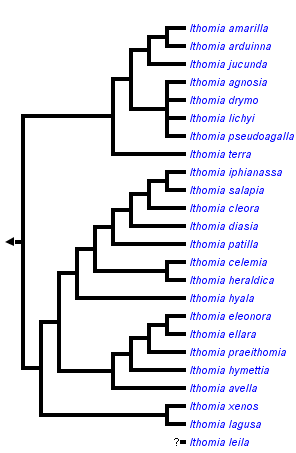


This tree diagram shows the relationships between several groups of organisms.
The root of the current tree connects the organisms featured in this tree to their containing group and the rest of the Tree of Life. The basal branching point in the tree represents the ancestor of the other groups in the tree. This ancestor diversified over time into several descendent subgroups, which are represented as internal nodes and terminal taxa to the right.

You can click on the root to travel down the Tree of Life all the way to the root of all Life, and you can click on the names of descendent subgroups to travel up the Tree of Life all the way to individual species.
For more information on ToL tree formatting, please see Interpreting the Tree or Classification. To learn more about phylogenetic trees, please visit our Phylogenetic Biology pages.
close boxIntroduction
Butterflies in this genus are often very abundant and have a variety of wing colour patterns including transparent, yellow and 'tiger' (orange and black) patterns. They are commonly involved in mimicry with species in other genera of the Ithomiini such as Napeogenes, Hypothyris, Scada, Oleria and others. Many species show considerable geographic variation in colour pattern, with as many as nine sub-species described for some species.
The genus is distributed throughout tropical America, from Mexico through Central America to Brazil and Bolivia. Their centre of diversity is in the northern Andes and Central America. Several species are restricted to montane habitats
As is the case for most Ithomiini, host plants are primarily in the family Solanaceae. The most important genera known for central american species are Solanum, Acnistus, Lycianthes, Witheringia and Capsicum (DeVries, 1987). Host plant relationships in other parts of the range remain poorly studied.
Characteristics
Male butterflies in this genus and its sister genus Pagyris are easily recognised by a distinctive raised bump near the costal margin of the hindwing underside in a position that corresponds with the location of the androconial patch. This is an excellent character easily recognised in the field. Females can generally be readily matched with males found in the same location, as there is little sexual dimorphism in the genus.
Discussion of Phylogenetic Relationships
The phylogenetic relationships presented here are based on an analysis of DNA sequence data from seven different gene regions (Mallarino et al., 2005). There was some conflict between the different gene regions sequenced, with different genes giving a different signal for some species such as I. hyala. However the combined evidence tree presented here is in agreement with the majority of gene regions in areas of conflict. There remain some areas in which relationships are poorly supported, notably among the species I. agnosia, I. pseudoagalla, I. lichyi and I. drymo, that are represented here as an unresolved polytomy.
Prior to this study there was no cladistic analysis of this genus, and little is known of variation in morphological characters such as genitalia that might be used to complement the molecular data.
Several revisions to previously proposed taxonomy were made on the basis of the DNA data. For example the western Ecuador population I. pseudoagalla was previously considered a race of I. agnosia, but is very distinct genetically and we consider it a good species.
References
DeVries, P. (1986) The Butterflies of Costa Rica Princeton Univ. Press, Princeton, NJ.
Lamas G ed. 2004. Atlas of Neotropical Lepidoptera. Checklist: Part 4A Hesperioidea - Papiionoidea. Gainesville: Scientific Publishers/Association of Tropical Lepidoptera.
Mallarino, R., E. Bermingham, K. R. Willmott, A. Whinnett, and C. D. Jiggins. 2004. Molecular systematics of the butterfly genus Ithomia (Lepidoptera: Ithomiinae): a composite phylogenetic hypothesis based on seven genes. Molecular Phylogenetics and Evolution 34:625-644.
Title Illustrations

| Scientific Name | Ithomia eleonora |
|---|---|
| Location | Peru: Manu, Cock-of-the-Rock Lodge |
| Specimen Condition | Live Specimen |
| Identified By | Kim Garwood |
| Behavior | gathering pyrrolizidine alkaloids from composite flowers |
| Sex | Male |
| Life Cycle Stage | adult |
| View | ventral |
| Source | Eleonora Clearwing (Ithomia eleonoras) |
| Source Collection | Neotropical Butterflies |
| Copyright | © 2004 Kim Garwood |
| Location | Fortuna, Chiriqui, Panama |
|---|---|
| Specimen Condition | Live Specimen |
| Identified By | C Jiggins |
| Sex | Male |
| Image Use |
 This media file is licensed under the Creative Commons Attribution-NonCommercial-ShareAlike License - Version 3.0. This media file is licensed under the Creative Commons Attribution-NonCommercial-ShareAlike License - Version 3.0.
|
| Copyright |
© 2005 Chris Jiggins

|
| Scientific Name | Ithomia iphianassa |
|---|---|
| Location | COLOMBIA: Cundinamarca, La Vega |
| Acknowledgements | used by permission, granted to AVZB 5/18/11 |
| Specimen Condition | Live Specimen |
| Identified By | Kim Garwood |
| Sex | Male |
| Life Cycle Stage | adult |
| View | ventral |
| Source | Ithomia iphianassa |
| Source Collection | Flickr |
| Copyright | © 2010 Mike Chapman |
About This Page
Chris Jiggins

University of Cambridge, Cambridge, UK

Middle Tennessee State University, Murfreesboro, Tennessee, USA
Correspondence regarding this page should be directed to Chris Jiggins at and Andrew V. Z. Brower at
Page copyright © 2011 Chris Jiggins and
 Page: Tree of Life
Ithomia . Dynothea currently viewed as a subjective junior synonym.
Authored by
Chris Jiggins and Andrew V. Z. Brower.
The TEXT of this page is licensed under the
Creative Commons Attribution-NonCommercial-ShareAlike License - Version 3.0. Note that images and other media
featured on this page are each governed by their own license, and they may or may not be available
for reuse. Click on an image or a media link to access the media data window, which provides the
relevant licensing information. For the general terms and conditions of ToL material reuse and
redistribution, please see the Tree of Life Copyright
Policies.
Page: Tree of Life
Ithomia . Dynothea currently viewed as a subjective junior synonym.
Authored by
Chris Jiggins and Andrew V. Z. Brower.
The TEXT of this page is licensed under the
Creative Commons Attribution-NonCommercial-ShareAlike License - Version 3.0. Note that images and other media
featured on this page are each governed by their own license, and they may or may not be available
for reuse. Click on an image or a media link to access the media data window, which provides the
relevant licensing information. For the general terms and conditions of ToL material reuse and
redistribution, please see the Tree of Life Copyright
Policies.
- First online 28 October 2005
- Content changed 22 May 2011
Citing this page:
Jiggins, Chris and Andrew V. Z. Brower. 2011. Ithomia . Dynothea currently viewed as a subjective junior synonym. Version 22 May 2011 (under construction). http://tolweb.org/Ithomia/27607/2011.05.22 in The Tree of Life Web Project, http://tolweb.org/




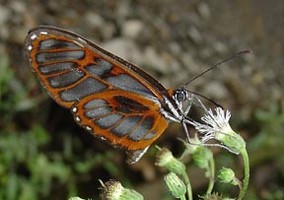
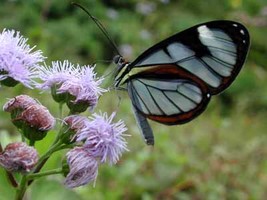

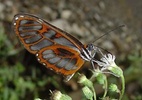
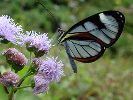


 Go to quick links
Go to quick search
Go to navigation for this section of the ToL site
Go to detailed links for the ToL site
Go to quick links
Go to quick search
Go to navigation for this section of the ToL site
Go to detailed links for the ToL site